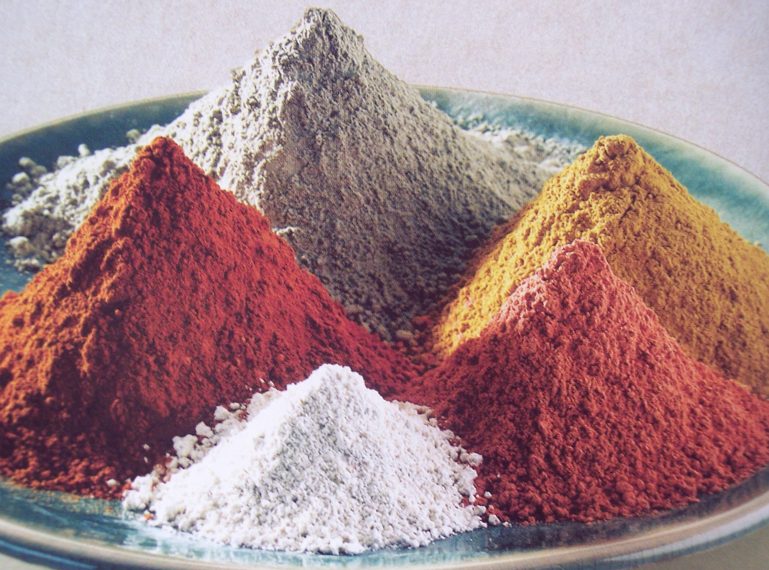
Hello girls,
Today I’m going to get you closer to clays.
Of course, it won’t be talking you into enrolling in a clay pottery curse or anything like that. I want to describe you cosmetic clays, which are my latest cosmetic revelations. I’m totally fascinated with the effects they produce.
Why?
Girls, what cosmetic clay is able to do to our face is a some kind of miracle!
I can’t remember my complexion being so pretty the last time! I’m extremely glad about the outcomes and I’m certain that I’ll include cosmetic clays to my regular face care. OK, but let me start from the beginning.
What’s a cosmetic clay?
Clay is simply a natural mineral which is also a natural cosmetics. It can be matched with all skin types: oily, dry, combination, capillaries or sensitive. After all, cosmetic clay has ‘many shades’… no, not like Grey, but maybe it’s better this way 😉
Completely safe, it neither works comedogenic nor it irritates. Instead, its action aims at absorbing sebum and all the impurities that gathered on the skin’s surface. It does this really wonderfully, it can be said that it lays in the clay’s nature because the molecules are charged negatively so they attract the molecules charged positively – and this is how all the toxins are charged like. Moreover, clays contain a wide range of minerals which are delivered to the skin by replacing the toxins. Silica, magnesium, potassium, calcium, zinc, copper, phosphor and iron – they smooth and make skin supple again. This makes skin look fresh and full of radiance.
To help cosmetic clay be in tune with our skin, we have to choose the right type of it.
Cosmetic clays – Kinds
- Green clay – for oily, combination and acne-prone skin. It contains plenty of iron ions, disinfects and heals up, degreases and cleanses skin. Additionally, it slows down bacteria multiplication. It smooths fine lines and makes skin tauter.
- Red clay – for acne and sensitive skin. It’s able to absorb sebum and it works antiseptic, yet soothing. It reliefs skin. Owning to the blood vessels contracting abilities, red clay can be also applied to capillary skin type.
- Yellow clay – it has slightly different (higher) content of iron oxide than its red version therefore, it’s able to heal exceptionally troublesome forms of acne. It’s good at smoothing skin. Often, it is called ‘iron for the wrinkles’.
- White clay – is the most popular from all the clay sisters. Frequently it is called china clay. It’s perfect for dry, sensitive and normal skin type. It smooths and highlights skin along with any discolorations that happen to appear on its surface. Moreover, it evens skin tone, contracts blood vessels so it can be used also on capillary skin. White clay is so delicate that it’s added to many baby powders.
- Blue clay – it should be applied to problematic skin that is affected by acne and other ailments like psoriasis or eczema. It absorbs sebum and impurities, highly mineralizes skin. Furthermore, blue clay smooths wrinkles and helps combat cellulite. It improves blood circulation, nourishes and regenerates tissues.
These are the basic types of cosmetic clays. It’s also worth mentioning that clays can be mixed at any proportions so as to intensify their action and create a combination that will targets all problems of your skin in the best way possible.
Only to face skin?
Well, no! What’s wonderful about the clays is that they can be applied to the entire body including hair. If you fight with greasy scalp and dandruff, or when your scalp is irritated or hypersensitive – it’s worth trying out clay masks. It’s important to realize that clays can be combined with other substances so as to obtain a healing mass.
You can choose from the whole range of ingredients having in mind the things your skin likes. The list is endless therefore, you can get another face mask every week and still use one type of clay. Moreover, cosmetic clays like being mixed with hydrolates so go ahead and mix it with damask rose, witch-hazel, rosemary or melissa. If your skin is hypersensitive, it’s a good idea to combine a clay with chamomile infusion. Also, many women mix clays with natural oils, or a blend of oils, to apply it either to face or hair. I really enjoy mixing my white clay with aloe gel, my beloved hair oil Nanoil and damask rose water.

Leave a Comment